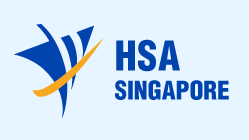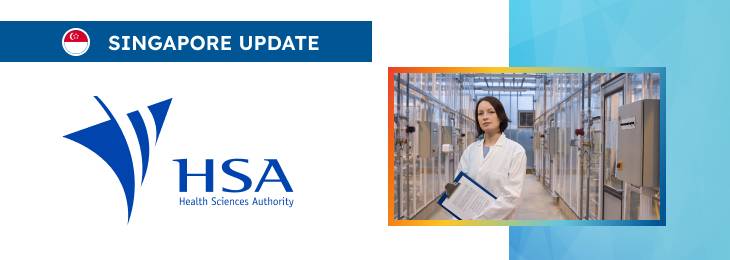The new article clarifies the scope of information to be included in the submission to ensure all the essential matters are adequately addressed, the submission is complete, and the authority has all the necessary information to make the regulatory decision.

Table of content
The Health Sciences Authority (HSA), Singapore’s regulatory agency in healthcare products, has published a guidance document to prepare a product registration submission for general medical devices using the ASEAN CSDT.
The document provides additional clarifications regarding the applicable regulatory requirements and recommendations to be considered by medical device manufacturers and other parties involved to ensure compliance with them.
At the same time, provisions of the guidance are non-binding in their legal nature, nor are they intended to introduce new rules or impose new obligations.
The authority also reserves the right to change the guidance and recommendations provided therein, should such changes be reasonably necessary to reflect the corresponding amendments to the underlying legislation.
In particular, the document outlines the scope of information to be included in the submission in line with the Clinical Software and Device Testing (CSDT) framework implemented to ensure medical devices’ safety, effectiveness, and reliability.
The guidance provides a comprehensive overview of the critical aspects of Design Verification & Validation, including physical and mechanical testing, electrical safety, software verification, biocompatibility, and others.
Based on the relevant international standards and guidelines, the CSDT framework provides for the rigorous assessment and certification processes that medical devices undergo before reaching the market.
Physical and Mechanical Testing
Ensuring the integrity and functionality of medical devices begins with rigorous physical and mechanical testing.
This section highlights the necessity of substantiating the physical or mechanical properties of the subject device.
The applicant is expected to provide sufficient evidence demonstrating compliance with the relevant regulatory requirements in terms of the way the device should perform when used for its intended purpose.

Electrical Safety and Electromagnetic Compatibility
The authority further emphasizes the importance of electrical safety and electromagnetic compatibility in medical devices.
In particular, medical devices intended to be marketed and used in the country must adhere to international standards such as IEC 60601-1 and IEC 60601-1-2.
This entails submitting summary test reports and certificates that validate the device’s conformance to these standards, ensuring it poses no electrical hazards and operates harmoniously within its intended electromagnetic environment.
Software Verification and Validation
Due to the rapid technology development, the software embedded within medical devices plays a crucial role in their operation.
The relevant section emphasizes the importance of detailing the software version, conducting comprehensive in-house and user environment testing, and addressing unresolved anomalies.
A critical component, the Traceability Analysis, establishes a direct linkage between product design requirements, specifications, and testing criteria, ensuring all identified hazards are mitigated effectively.
Biocompatibility
Assessing the biocompatibility of medical devices is essential to ensure they are safe for their intended use without causing adverse reactions.
This involves conducting studies and tests as recommended by ISO 10993 or providing adequate justification for any deviations, thereby affirming the device’s compatibility with biological tissues.
Devices Containing Biological Material
Using biological materials in medical devices introduces risks that must be meticulously evaluated.
This includes detailing the biological material used, conducting a comprehensive risk assessment, and validating the manufacturing processes to minimize biological risks.
Additionally, certifications such as the Certificate of Suitability (CEP) are necessary for materials associated with Transmissible Spongiform Encephalopathy (TSE) risks.
Sterilization and Validation
The applicants are also expected to provide comprehensive information about sterilization methods used to ensure the device in question meets the applicable sterility requirements it is subject to based on its intended use (for the products intended to be supplied in a sterile condition).
It is also essential to ensure the safety and functionality of the device will not be affected by the sterilization process.
Stability Studies
Stability studies are critical for determining a medical device’s shelf life or useful life. This involves evidence of product stability and packaging integrity over the claimed shelf life, incorporating real-time and accelerated aging studies to substantiate longevity and reliability
Animal Studies
Before human application, pre-clinical animal studies offer valuable insights into the device’s safety and efficacy.
Justification for the applicability of these studies to the subject device is crucial, ensuring the relevance and validity of the results.
However, it is essential to mention the overall intention to reduce the use of animal studies whenever possible.
Cybersecurity
With the increasing connectivity of medical devices, cybersecurity is a critical concern.
The relevant section outlines the necessity for a comprehensive cybersecurity framework, including vulnerability analyses, control measures, security testing, and ongoing threat management, to safeguard patient data and device functionality.
Clinical Evidence
The applicant should also objectively evaluate clinical data, literature reviews, and post-market surveillance, ensuring the device’s efficacy and safety in real-world applications.
It is also essential to ensure the data is adequately collected and, consequently, is accurate and reliable.
Labeling and Instructions for Use
Accurate labeling and clear instructions for use (IFU) are vitally important for ensuring the safe operation of medical devices.
This includes specifications for primary and secondary labels and the format of the IFU, ensuring users can safely and effectively utilize the device and have all the necessary information.
Risk Analysis and Management
A thorough risk analysis and management report is essential for identifying and mitigating potential risks associated with using the device.
This includes a detailed evaluation of cybersecurity risks, ensuring all known and foreseeable risks are managed to an acceptable level.
Manufacturing Information and Process
The final section addresses the manufacturing information and processes for medical devices. This includes details of the manufacturing and sterilization sites, compliance with ISO13485 or MDSAP certifications, and a manufacturing process flow diagram, ensuring the device’s production meets the highest quality standards.
Conclusion
The CSDT framework provides a comprehensive approach to ensuring medical devices’ safety, efficacy, and quality.
By adhering to this rigorous framework, manufacturers can ensure their products meet the highest reliability and safety standards.
How Can RegDesk Help?
RegDesk is an AI-powered Regulatory Information Management System (RIMS) designed to simplify global compliance for medical device companies. With regulatory intelligence covering 120+ markets, RegDesk helps you prepare and publish global submissions, manage standards, conduct impact assessments, and stay ahead of regulatory changes all from a single, centralized platform. Expanding into new markets has never been easier.

